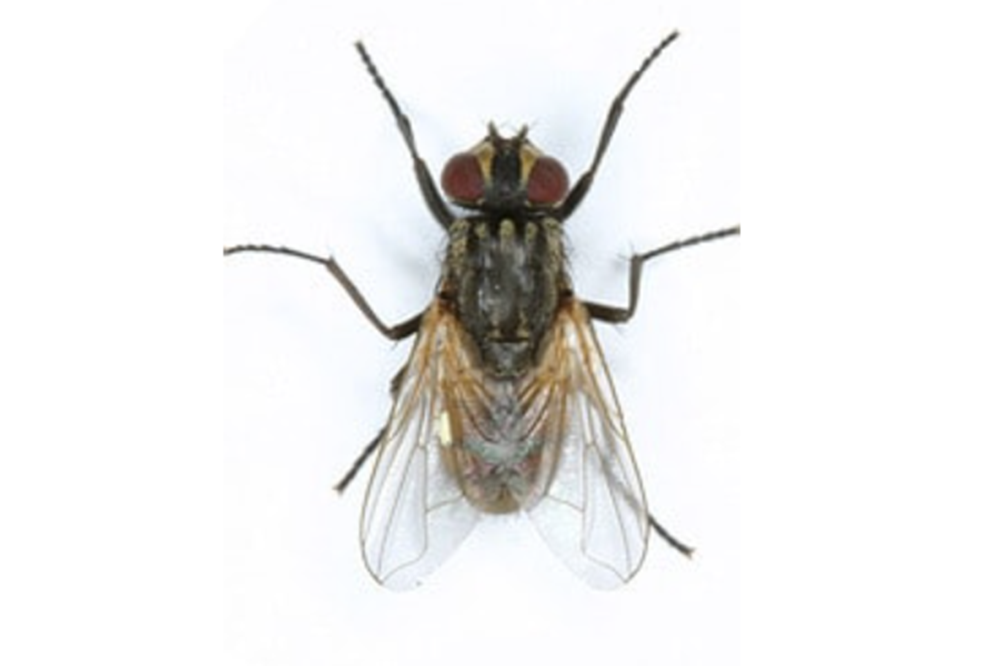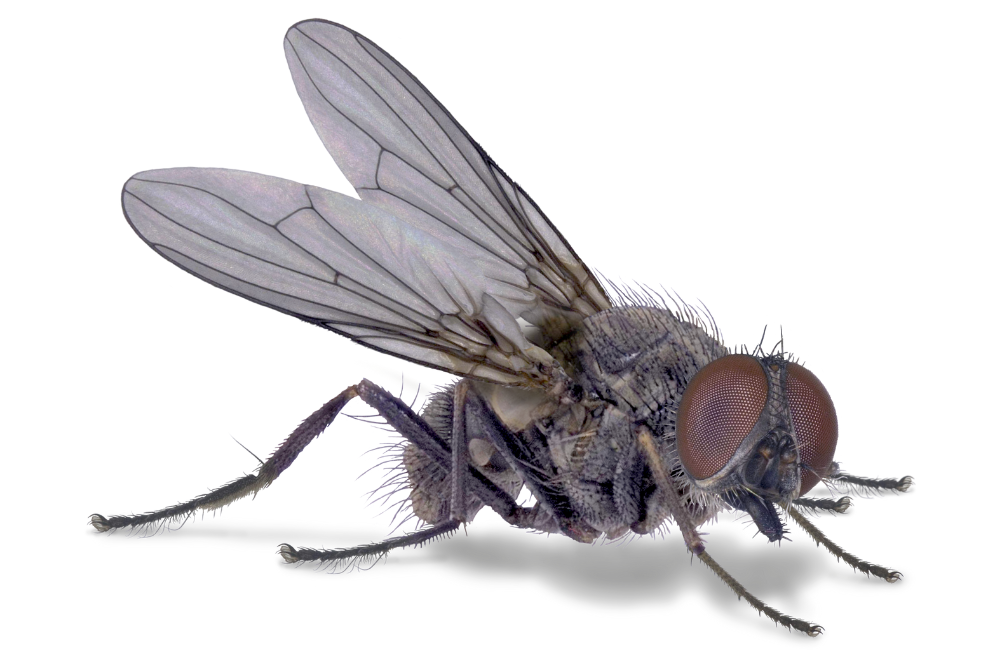Meet the House Fly
The house fly can be found where it feeds— on human food, animal waste and garbage. This pest breeds quickly and efficiently with females depositing up to 150 eggs at a time. Because of this, populations can increase dramatically in a short period.
How to Identify House Flies?
- Non-metallic dull grayish color
- Four distinct stripes on the thorax
- Pale yellowish abdomen
Health Effects and Diseases from House Flies
Dairy
House flies breed quickly and lay eggs in cow manure as well as other areas on your operation. This fly spreads more than 65 diseases to cows including mastitis, pinkeye and Bovine Respiratory Disease (BRD), also commonly known as “shipping fever”.
Sheep and Goats
House flies spread diseases to sheep and goats. Sixty-five disease organisms are linked to house flies. One of these diseases is mastitis, which limits the quality and quantity of milk and causes weight loss. Other common diseases include salmonellosis, pinkeye, tuberculosis and botulism.
Equine
House flies breed in animal manure, and infestations grow fast. These flies inflict stress on horses and cause irritations such as summer sores, pigeon fever and equine granular dermatitis.
Swine
House flies spread harmful disease organisms such as PEDv and E. coli to pigs. Disease and illness spread quickly due to the pigs’ close proximity to one another. This in turn increases treatment costs. These flies also cause undue stress on the animals, which can cause pigs to feed less and lose weight.
Understanding how to control flies on livestock begins with understanding the pest’s life cycle. House flies move from animal to animal causing irritation and spreading diseases. Controlling house flies through a combination of strategies and products keeps your animals comfortable and helps prevent common health effects and diseases in livestock. Implementing a proactive, integrated pest management (IPM) program incorporating ClariFly® Larvicide and Starbar® Baits will help prevent house fly populations from rapid growth.



